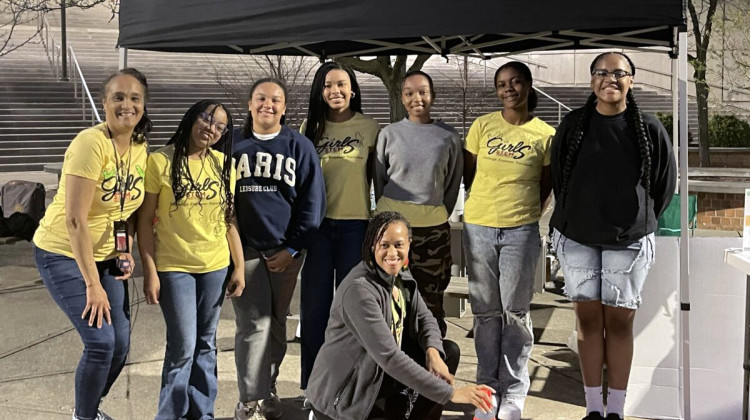
Zoya, the 20-week-old Amur tiger cub born in July, accompanied her mother into the Zoo’s tiger habitat for about a half an hour, while the media and some zoo employees caught their first glimpse.
Christopher Ayers/WFYIThe latest addition to the Indianapolis Zoo’s Amur tiger family made her public debut Tuesday.
Zoya, the 20-week-old Amur tiger cub born at the zoo in July, accompanied her mother into the Zoo’s tiger habitat for about a half an hour, while the media and some zoo employees caught their first glimpse. She was bred as part of the Association of Zoos and Aquariums Species Survival Plan, or SSP.
"Basically, the easiest way to describe that is it’s a big dating service for animals based on genetics," says Ellen Dreska, a senior keeper at the Indianapolis Zoo. You know, kind of an E-Harmony for animals."
So Zoya’s mother Andrea and father Petya, both Amur tigers residing at the Indianapolis Zoo, were deemed genetically suited to breed—and so they did.
Dreska says Zoya has grown a lot over the past five months and that will continue until she becomes a mature adult tiger at about two years of age.
"She’s probably about 45 to 50 pounds now, I’d say," Dreska says. "The last time we weighed her was about three weeks ago or so, and she was thirty six pounds then, and she’s been gaining steadily. So we are now completely hands off. We don’t go in and weigh her. We know that she’s doing fine."
Zoo Employee Kristen Freeman was at the zoo the day Zoya was born, and has been waiting to get a glimpse of her. She says there’s only one way to describe the cub.
"Um, adorable!" Freeman says. "I mean, you can't go wrong with a cute little fuzzy cat. Or even if it's a big cute fuzzy cat."
Native to Siberia, Amur tigers once numbered in the tens of thousands, but it’s now estimated less than 500 live in the wild.
 DONATE
DONATE






 View More Programs
View More Programs

 Support WFYI. We can't do it without you.
Support WFYI. We can't do it without you.